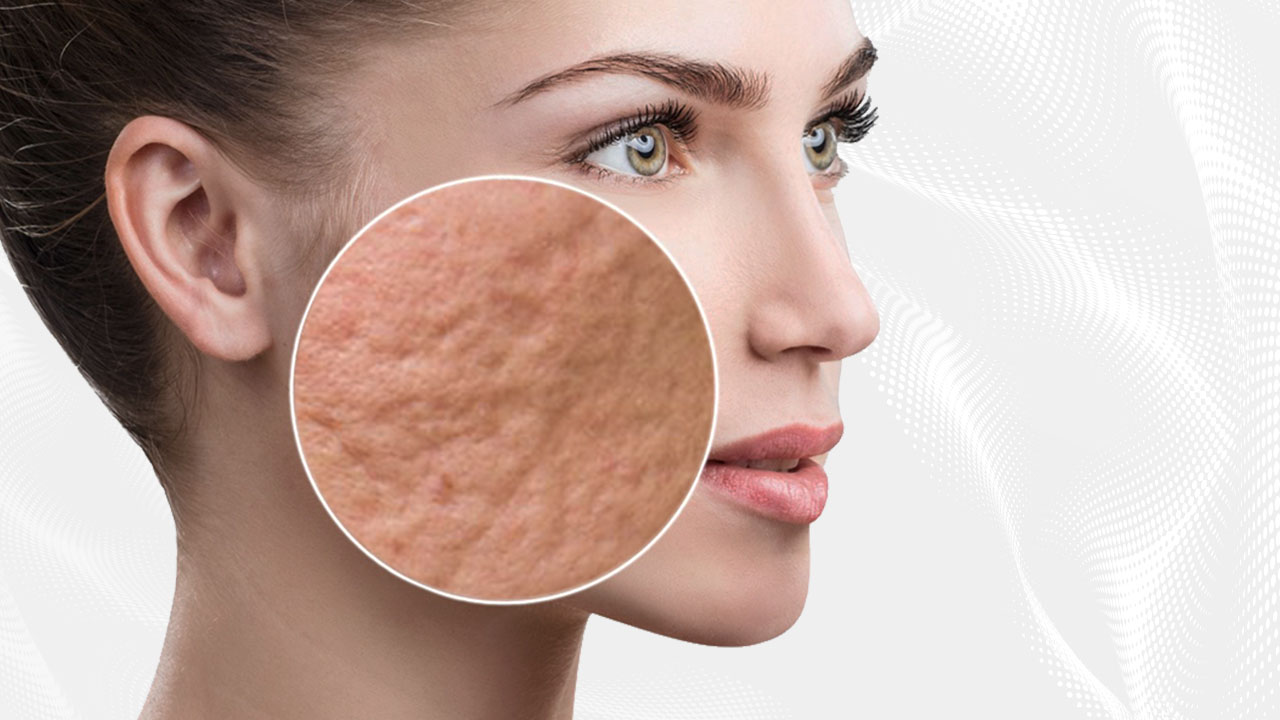
Acne Scars
During adolescence, acne, a natural consequence of development and growth, resolves on its own with the end of puberty. However, in some individuals, especially those with a genetic predisposition or excessive sebum production in the skin, or underlying hormonal disorders, this period can be more severe. Large inflammatory pimples, known as cystic or nodular acne, often heal leaving indentations on the skin. As each new large pimple emerges, it may leave a new indentation, causing significant surface irregularities over time. While treatments regulated by dermatologists aim to reduce the severity of acne, sometimes scars may still remain after the acne problem has completely resolved. Various treatment methods are available to correct the scars left after acne has completely subsided.
1. Fractional CO2 Laser Treatment:
Fractional laser is the gold standard, i.e., the most effective treatment method for acne scar treatment and is only applied in the winter months. It is used not only for the treatment of acne scars but also for skin rejuvenation, wrinkle, and sagging treatments, as well as the treatment of scars resulting from wounds, burns, and surgeries. The area to be treated is numbed with topical anesthetic creams before the procedure. Thousands of holes are created in the skin with laser beams, triggering the skin's wound healing mechanism, and the skin begins to regenerate itself. This helps fill in the indentations left after acne. Redness and burning sensation after the procedure decrease after 2 days, but it takes about a week for the scabbing to subside and complete relief to occur. Treatment sessions are performed once a month. The full effect is felt after 3 sessions. The number of sessions needed varies from person to person. It is crucial to protect the skin from the sun after the procedure.
2. Microneedle Radiofrequency Treatment (Gold Needle):
When the fine needles in the gold needle head enter the skin at a certain depth, they simultaneously deliver heat energy to the skin with radiofrequency. Since both the entry of the needles into the skin and the heat energy stimulate collagen production, the scars caused by acne begin to fill in gradually. In addition to reducing scars, collagen stimulation leads to tightening and radiance in the skin. Since topical anesthesia is applied before the procedure, the pain felt is minimal, and redness that occurs after the procedure recedes within a few hours. The actual effects of gold needle application are more pronounced after the third session. Sessions are performed once a month, and treatment continues until the desired results are achieved.
3. Dermapen Treatment:
The aim of dermapen treatment is to stimulate collagen by penetrating the skin with the fine needles of the dermapen head. The skin's wound healing mechanism is triggered by micro traumas to the skin, resulting in increased collagen synthesis. As collagen synthesis increases, acne indentations begin to fill in, and pores tighten, renewing the skin.
4. Mesotherapies:
Mesotherapies containing intensive peptides or salmon DNA, which stimulate collagen synthesis, yield much better results in eliminating acne scars when used in conjunction with device treatments.
5. Applications Containing Calcium or Poly-L-Lactic Acid:
Both calcium and poly-L-lactic acid are potent collagen stimulants. Therefore, they are very effective treatments for skin renewal and eliminating acne indentations. The effects begin approximately 3 months after the application and last for about 1.5-2 years.
Every skin is unique to the individual. Therefore, it is crucial to provide health solutions and medical support tailored to the individual with a personalized treatment approach. Dr. Pınar Koç specializes in dermatological conditions, particularly aesthetic and cosmetic dermatology, laser applications in dermatology, and hair diseases. For detailed information and consultancy, you can contact us.



